EGYPTIAN HERBARIUM
Egypt
Manufacturer/ Producer
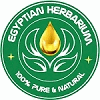
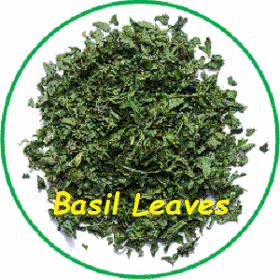
EGYPTIAN HERBARIUM
Egypt
BASIL Leaves Botanical Name: Ocimum basilicum The "king of herbs". Best known as a culinary herb prominently featured in Italian cuisine, and also plays a major role in Southeast Asian cuisines. One of the main ingredients in pesto—a green Italian oil-and-herb sauce. PROCESSING PACKING 20' FCL Load 40' FCL Load C/S, coarse PP Bags, 15 kg 3,000 kgs 6,000 kgs C/S, TBC PP Bags, 25 kg 7,500 kgs 15,000 kgs STORAGE : In a cool, dry away from direct sunlight SHELF LIFE: 18 months from production date Product CHEMICAL: ASH CONTENT : max. 16% INSULABLE ASH: max. 3.5% APPEARANCE : small pieces of leaves COLOR : Green to brownish ODOR : Typical, aromatic, spicy FLAVOR : Typical, spicy, slightly sweet, hot
Request for a quote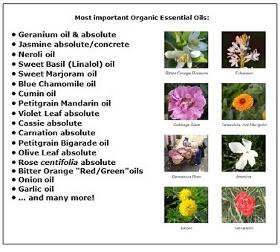
EGYPTIAN HERBARIUM
Egypt
Raw materials [conventional and organic]; (essential oils, concretes, absolutes, extracts, hydrolates, botanical waxes)Fine Fragrance, Flavor, Cosmetics, and Aromatherapy/Phytotherapy industries. Most important products are: • Geranium oil & absolute • Jasmine absolute/concrete • Neroli oil • Sweet Basil (Linalol) oil • Sweet Marjoram oil • Blue Chamomile oil • Cumin oil • Petitgrain Mandarin oil • Violet Leaf absolute • Cassie absolute • Carnation absolute • Petitgrain Bigarade oil • Olive Leaf absolute • Rose centifolia absolute • Bitter Orange "Red/Green" oils (CP) • Onion oil • Garlic oil • ... and many more! • Farming (55 ha of own plantations & network of 5'000+ ha contract farming) • Processing (steam distillation, solvent extraction, certified organic extraction), • QC/laboratory analysis (GC/FID, GC/MS, refractometry, densitometry, optical rotation, etc.
Request for a quote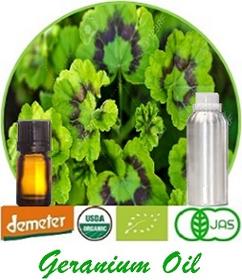
EGYPTIAN HERBARIUM
Egypt
Botanical Name: Pelargonium Graveolens Main Constituents: Citronellol: 37% Geraniol: 19% Plant Part: Leaves & Flowers Origin: Egypt Processing Method: Steam Distilled Description / Color / Consistency: A thin, pale yellow to greenish yellow liquid. ConstituentsOxyd alpha-bisabolol, trans-beta-farnesene, chamazulene Aromatic Summary / Note / Strength of Aroma: A middle note with a stronger aroma, essential oils from the rose geranium usually have a softer scent with a rosy floral aroma. Blends With: Basil, Bergamot, Citronella, Clary Sage, Fennel, Grapefruit, Jasmine, Juniper, Lavender, Lemon, Lemongrass, Neroli and Nutmeg. Storage: It is recommended that oils packaged in metal containers (for safe shipping) be transferred into dark glass containers to maintain freshness and attain maximum shelf life Advised uses : Aromatherapy, Perfumery, Cosmetic, Alimentary
Request for a quote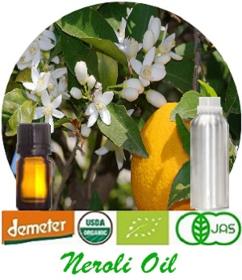
EGYPTIAN HERBARIUM
Egypt
Botanical Name: Citrus aurantium L. Main Constituents: Linalyl Acetate: 10 - 20% Limonene: 10 - 15% Plant Part: Blossoms. Origin: Egypt. Processing Method: Steam Distilled. Description / Colour / Consistency: A thin, clear, pale yellow liquid. Aromatic Summary / Note / Strength of Aroma: A middle note with a medium aroma, this type has dry top notes. Blends With: Citrus oils, Jasmine, Rose, and Sandalwood Neroli is one of the shining stars of the perfume industry, and has been for the past 500 years since it became a popular simple fragrance in Venice. This oil has a dry, heady scent, and is not so sweet as Neroli from Sicily or Florida. It is thought to be one of the secret flavouring agents in Coca Cola. Storage: It is recommended that oils packaged in metal containers (for safe shipping) be transferred into dark glass containers to maintain freshness and attain maximum shelf life.
Request for a quote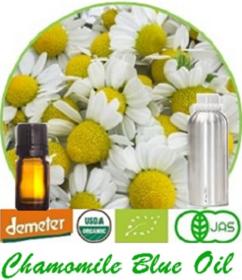
EGYPTIAN HERBARIUM
Egypt
Botanical Name: Matricaria chamomilla L Main Constituents: α-Bisabolol: 30 - 40% Farnesene: 20 - 38% Chamazulene: 4 - 4.5% Plant Part: Flowers Origin: Egypt Processing: Steam Distilled Description / Color / Consistency: A deep blue to bluish-green liquid with a medium viscosity. Aromatic Summary / Note / Strength of Aroma: A medium middle note, Chamomile Essential Oil has an herbaceous fragrance similar to that of freshly mown straw, only with a dry, almost bittersweet note. Blends With: Bergamot, Clary Sage, Lavender, Geranium, Jasmine, Neroli, Patchouli, Tea Tree, Rose, Lemon and Ylang-ylang. Product Abstract: Chamomile is an annual native of Europe and Western Asia, growing to 90-125 cm high with very hairy leaves and tubular yellow flowers, surrounded by white ligulets. The word 'chamomile' comes from the Greek word chamomaela or ground apple, referring to the fact that the plant grows low to the ground, and the fresh blooms have a pleasing apple-scent.
Request for a quote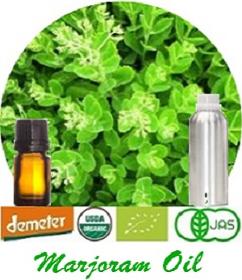
EGYPTIAN HERBARIUM
Egypt
Botanical Name: Origanum majorana Main Constituents: 4-Terpineol: 23% Linalool: 18% γ-Terpinene: 13.5% Plant Part: Flowers and Leaves Origin: Egypt Processing Method: Steam Distilled Description / Color / Consistency: A thin, clear, pale yellow liquid. Aromatic Summary / Note / Strength of Aroma: A middle note with a medium aroma, it has a warm and spicy aroma, with a note like nutmeg. Blends With: Orange, Lavender, Rosewood, Frankincense, Tea Tree, Eucalyptus, Basil, Thyme, Cypress, Elemi, Chamomile, and spices like Nutmeg or Cardamom. Product Abstract: An herb of the Origanum family, Sweet Marjoram enjoyed popularity as a common medicinal herb around the Mediterranean basin. A few drops can be put in a vaporizer before bed, and a few drops can be added to a hot bath at the first signs of a cold. It is used in masculine, oriental, and herbal-spicy blends for perfumes and colognes. Storage: In metal containers to be transferred into dark glass containers.
Request for a quote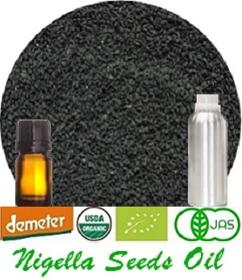
EGYPTIAN HERBARIUM
Egypt
Botanical Name: Nigella sativa L. Extraction Method: Cold Pressed Processing Type: Unrefined Obtained From: Seed Origin: Egypt Description: Black Cumin Seed Carrier Oil is derived from small, black, crescent shaped seeds that is traditionally known to have abundant therapeutic properties. Its historical usage can be traced back to the Middle East and the Mediterranean where it was revered as a remedy for skin and hair in particular. Due to its faster absorption by the skin, the seed oil is known to be more potent than the seeds themselves. Color: Pale amber to dark amber liquid with slightly greenish hue. Aromatic Description: Characteristic odor with mild spicy note. Common Uses: The oil of these carminative Black Cumin Seeds contains B-vitamins which are believed to strengthen the skin to protect itself. Its antioxidant and soothing properties helps to soothe dry and irritated skin and keep it moisturized. Ability to soften and smooth the skin.
Request for a quote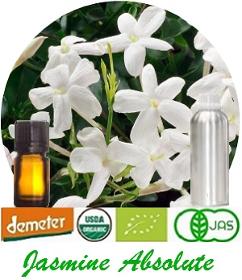
EGYPTIAN HERBARIUM
Egypt
Botanical Name: Jasminum grandiflorum Plant Part: Flowers Extraction Method: Solvent Extraction Origin: Egypt Description: Jasmine Grandiflorum is a beautiful plant; its flowers bloom in the early dawn as opposed to Jasmine Sambac that blooms in the evening. Color: Light reddish brown liquid. Common Uses: Jasmine Grandiflorum Absolute has a sensual, soothing fragrance that promotes a sense of harmony. Note: Middle Strength of Aroma: Strong Blends well with: Jasmine Grandiflorum Absolute generally works with all oils. It helps to round out scents, and tends to work particularly well with other aphrodisiac oils (Sandalwood and Ylang-ylang are two great examples) Aromatic Scent: Jasmine Grandiflorum Absolute has a smooth, extremely intense floral smell that is both sweet and lingering. Storage: Recommended that oils packaged in metal containers (for safe shipping) be transferred into dark glass containers to maintain freshness and attain maximum shelf life.
Request for a quote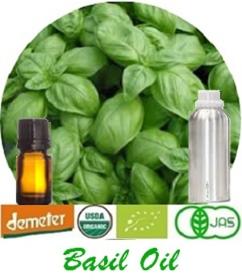
EGYPTIAN HERBARIUM
Egypt
Botanical Name: Ocimum basilicum L. Main Constituents: Methyl chavicol: 73.78% Linalool: 20.6% Plant Part: Leaves Origin: Egypt Processing Method: Steam Distilled Description / Color / Consistency: This is almost colorless to a pale amber colour with a thin consistency. Aromatic Summary / Note / Strength of Aroma: Basil has a sweet, spicy, fresh scent with a faint balsamic woody back note and a lasting sweetness that makes for a strong top note. Blends With: Bergamot, Clary Sage, Clove Bud, Lime, Eucalyptus, Juniper, Lemon, Neroli, and Rosemary. In Greek its name means 'royal remedy' or 'king'. In the 16th century, powdered basil was used to treat migraines and chest infections. The ancient Egyptians believed that it would open the gates of heaven to a dying person. Western European lore sometimes claimed that it was a symbol of evil, while the Eastern Orthodox Church used it in the making of holy water. Storage: In dark glass containers
Request for a quoteManufacturer/ Producer
114 Zakaria Ghoneim Str., Ibrahimia
21321 Alexandria - Egypt
europages also recommends
A selection of companies related to the activity:
A selection of products that might interest you
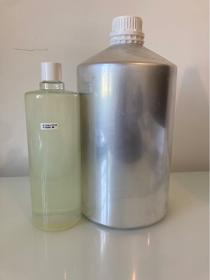
ANASCAN LAHN
France
Essential oil of thyme, thujanol chemotype, trans-4-thujanol: 38,4%. cis-4-thujanol: 1,9%. Linalol: 4,2%. See pdf attached for detailed analysis. Bulk sale only, 1 kg minimum.
Request for a quote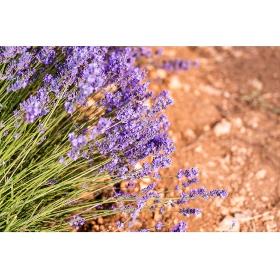
MADJAROV 92
Bulgaria
Lavender, a versatile and fragrant herb, is celebrated for its captivating aroma, soothing qualities, and diverse applications.
Request for a quote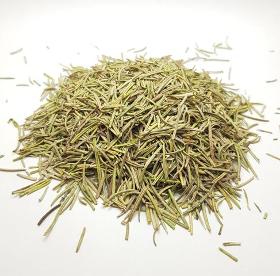
TAREGE TRADE HOUSE
Turkey
Rosemary, upon customer requirements can be offered as whole or cut.
Request for a quoteRequest for quotes
Create one request and get multiple quotes form verified suppliers.
- Only relevant suppliers
- Data privacy compliant
- 100% free


